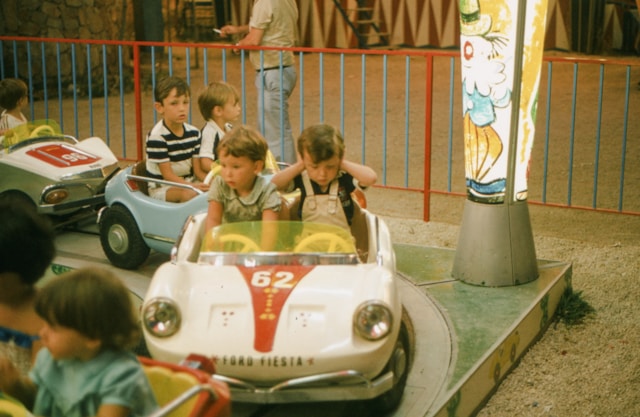Watching your child develop and grow is one of the most fulfilling experiences for any parent. Besides fun and enjoyment, toys are crucial in aiding a child’s development, especially motor skills. Ride-on cars for kids are particularly effective in supporting this kind of growth. Let’s discover how these toys can provide substantial benefits beyond mere entertainment.
Building Gross Motor Skills
One of the most significant benefits of kids ride on cars is their ability to improve gross motor skills. These skills involve the large muscle groups responsible for walking, running, and jumping. They are essential in helping children develop physical strength and coordination.
When kids operate a ride-on car, they must use their legs to push the pedals and maneuver the steering wheel with their arms, engaging a range of muscles contributing to physical growth and balance. This activity helps them understand how to coordinate their body parts to achieve movement in specific directions, making it an ideal exercise for developing coordination at an early age.
Fine Motor Skills and Precision
In addition to strengthening gross motor abilities, these cars help children fine-tune their smaller muscle movements. While it may not be as apparent, driving requires a certain level of precision and control. For example, handling the steering wheel demands eye and hand coordination, which is critical for developing fine motor skills.
By engaging these muscles, kids learn to control their grip, adjust the wheel’s angle, and make minor adjustments that affect the car’s direction. This subtle control over hand movements helps improve talent, which is helpful for various tasks, from drawing to handling small objects.
Spatial Awareness and Problem Solving
One less obvious but highly beneficial aspect of using a ride-on car is the development of spatial awareness. Understanding one’s position concerning other objects is a fundamental skill, and kids ride on cars helps foster this awareness. As children navigate around obstacles, they gain an understanding of space, distance, and direction. This teaches them how to plan their movements to avoid bumping into things, improving their ability to perceive and judge spatial relationships.
When they drive ride-on cars, children engage in basic problem-solving in addition to spatial awareness. If they encounter an obstacle, they need to figure out how to maneuver around it. This helps them understand cause and effect as they see how their actions directly influence the movement.
Building Confidence and Independence
Engaging in an activity like riding gives children a sense of autonomy that can be empowering. Controlling their movement allows them to explore their environment and make decisions independently. For young children, this can foster self-confidence and a sense of accomplishment. They learn to trust their instincts and build resilience by making choices. This adds to their sense of independence and prepares them for situations where they must think and act for themselves.
Encouraging Social Interaction
Ride-on cars promote social interaction by encouraging cooperative play with siblings and friends. Kids often create imaginative scenarios, take turns driving, or play pretend races. This helps them develop essential social skills like taking turns, sharing, and teamwork. Whether playing in groups or with another child, ride-on cars help children build interpersonal skills that benefit them throughout life.
Kids ride on cars offer far more than meets the eye, supporting multiple aspects of childhood development. From enhancing motor skills to encouraging imaginative play, these provide a range of developmental benefits. As a parent, introducing your child to a car could be a valuable step in their growth journey. The joy on their face, combined with the physical and cognitive development they achieve, makes these toys an investment that is as rewarding for parents as it is for children.




